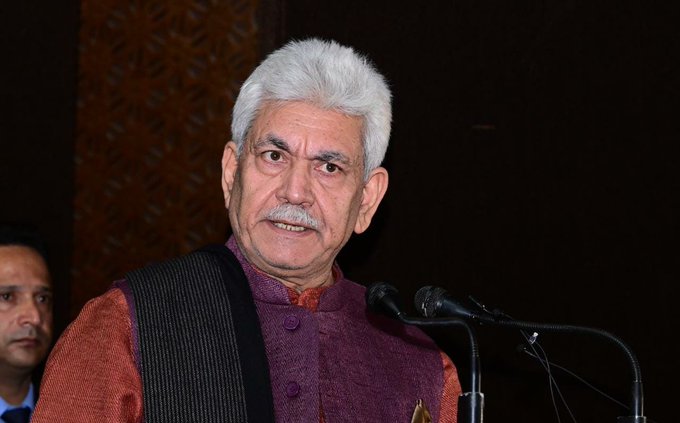Srinagar: Shri Amarnath Shrine Board (SASB), which functions currently under Lieutenant Governor Manoj Sinha, is for the first time planning to extend the schedule of the annual pilgrimage this year from 43 days to 60 days.
Knowledgeable sources said that the authorities were planning the extension of 17 days in view of the remarkable improvement in the situation and a considerable increase in the number of tourists and aspiring pilgrims this year. Since the spiritual odyssey has to be concluded on 30 August, coinciding with Raksha Bandhan and Shravan Purnima this year, the Yatra could start at an auspicious date around 27 June. Some of the officials are understood to be in favour of starting the pilgrimage from 20 June.
In 2022, the pilgrimage lasted 43 days, from 30 June to 11 August. The pilgrimage was stopped due to the Covid-19 pandemic in 2020 and 2021. In the year 2019, the Yatra was curtailed by 15 days as the pilgrims were officially notified to return and leave the valley by 31 July. Consequently, only the ‘Chhari Pujan’ was performed. Later, it became clear that the decision had been taken in apprehension of street protests due to the proposed abrogation of Article 370, which ultimately was revoked by way of an extraordinary Parliamentary legislation on 5 and 6 August, 2019.
During the over three years of the PDP-BJP government in the erstwhile State in 2015-18, there was a competitive campaigning in some pseudo-separatist groups in the valley to force the authorities to reduce the schedule of operation of the Yatra and the number of the pilgrims to be permitted every day. There were repeated references to the Nitesh Sengupta committee report and a 37-page report, containing 25 recommendations, from the Jammu & Kashmir State Pollution Control Board.
The Sengupta committee was constituted after more than 200 Amarnath pilgrims died due to inclement weather, including blizzard and heavy rainfall, in 1996. It inter alia recommended to limit the number of the pilgrims. However, there was no such natural calamity in the 20 years after that.
Yatra is currently conducted through the two traditional routes of Pahalgam and Baltal. While the tracks are being upgraded from either side, the authorities are now planning a more secure and comfortable pathway from the shorter route side of Baltal. They are also working on a proposal to install ropeways to the cave shrines of Amarnath in Kashmir and Mata Vaishno Devi in Katra, Jammu.
Currently pilgrims visit the two revered cave shrines by road and a helicopter service. Battery operated vehicles are operated on a portion of the Yatra route in Katra while the pedestrian pony services are available for both the shrines. There is also a demand that a better track and a ropeway from Baltal side to Amarnath shrine should be laid by the companies constructing a tunnel in Sonmarg-Zojila area on the strategic Srinagar-Leh highway out of their corporate social responsibility (CSR).
Sources said that the SASSB meeting, presided over by Chairperson Manoj Sinha on Friday, discussed various suggestions to make the pilgrimage more comfortable for the aspirants this year. It took a detailed review of the works in progress.
Dr Mandeep K. Bhandari, Principal Secretary to Lt Governor and Chief Executive Officer SASB made a detailed presentation and briefed the board on various aspects of Shri Amarnath Ji Yatra-2023, including registration for Yatra, provision of helicopter services, service providers, Yatra camps, langar/NGO services and insurance cover for yatris/service providers.




















